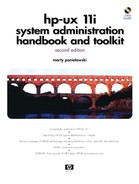Internet Services Berkeley (Communication between UNIX Systems)
| Remote Copy (rcp) | |
| This program is used to copy files and directories from one UNIX system to another. To copy /tmp/krsort.c from system1 to system2, you could do the following: | |
$ rcp system2:/tmp/krsort.c /tmp/krsort.c
Some networking configuration needs to be made to files to get this level of functionality. In this example, the user who issues the command is considered “equivalent” on both systems and has permission to copy files from one system to the other with rcp. (These terms are described shortly).
| Remote login (rlogin) | |
| Supports login to a remote UNIX system. To remotely log in to system2 from system1, you would do the following: | |
If a password is requested when the user issues the rlogin command, the users are not equivalent on the two systems. If no password is requested, then the users are indeed equivalent. You can also issue rlogin system -l user to specify the system and user as part of the command.
In this case, the users on system1 and system2 must be equivalent, or else permission is denied to issue this command.
| Remote who (rwho) | |
| Find out who is logged in on a remote UNIX system. Here is the output of issuing rwho: | |
$ rwho
root system1:ttyu0 Sept 1 19:21
root system2:console Sept 1 13:17
tomd system2:ttyp2 Sept 1 13:05
| | | | |> time of login
| | | |> day of login
| | |
| | |> terminal line
| |> machine name
|
|> user name
For rwho to work, the rwho daemon (rwhod) must be running.
Other "r" commands, in addition to those covered are available. Also, variations of these commands occur going from one UNIX variant to another, so you may not run exactly the same "r" command on your UNIX system.
